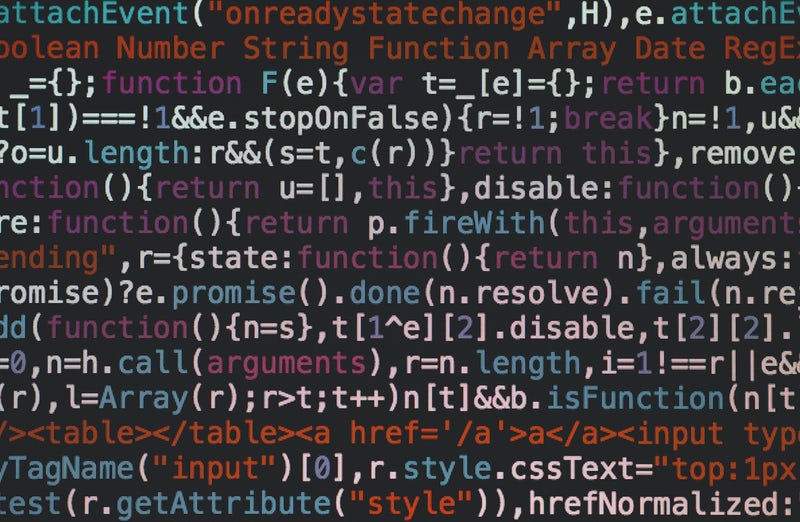The Conceptual Approach to Corporate Security
In practice, difficulty is generally to achieve and maintain a satisfactory level of security. The reasons are tight budget, the increasing complexity of IT systems and lack of resources. A wide range of IT security products and consultants offer quite different solutions.
Security is a fundamental need of human beings. The notion of security in the real world is an intuitive one for most of us. In prehistoric time, security was defined by the essentials of survival such as security against any attack by others or by animals, as well as security of the food supply. In the era of globalisation, especially, growing dependence on information and communication technology and rising mobility and by the industrial nations, this need for security is gradually becoming ever more pronounced. The threat of massive financial damage and increased vulnerability the pressure to take action to prevent damage and minimise the residual risk through active IT security management.
Responsibility is not confined to the IT departments concerned. On the contrary, security is a managerial issue. Additionally, various regulations now make directors personally responsible should they fail to take the required action. It is widely believed that IT security management necessarily entail high investment in security technology and that their implementation requires very highly skilled personnel.
However, this is not the case. The main ingredients of success are common sense, well thought out organisational procedures and reliable, well informed staff who independently and expertly observe security requirements in a disciplined demeanour. Implementation of an effective IT security concept therefore need not necessarily be expensive.
Every Security professional keep in mind that, there are three fundamental values of IT security: confidentiality, availability and integrity.
Confidentiality: information must be confidentially protected against unauthorized disclosure.
Availability: IT system functions, services data and information must be available to users as required.
Integrity: Data must be unaltered and complete while using. In information technology, the term “information” is used to refer to “data” to which, depending on the context, certain attributes, such as the author or time of creation, can be assigned. The loss of integrity of information might therefore mean that this data has been altered without any authorisation, that information relating to the author has been or date of creation falsified has been tampered with.
Like all other corporate risks, IT risks need to be managed proactively by the management, led absolutely senior management and assured by corporate governance. A model for managing security risks is suggested below.
Implementation will clearly need to reflect the nature of your business and your appetite for risk
- Be sure yourself that the information risk management approach works effectively
- Make protecting your information a management responsibility
- Implement an information risk management approach
Management is confident in assuring that the IT department was implementing a compliance procedure to required standards. A Sustainable corporate governance approach would have spotted areas of concern before any attack.
The process of developing and implementing a security strategy for any enterprize company has many of the same elements as the development and implementation of a computer security program for a corporate. These could be,
- Structure accountability
- Develop a risk management program
- Adopt appropriate security guideline
- Assess vulnerability
- Raise awareness
- Designate program management leadership to serve as policy coordinator
- Seamlessly improve and periodically reassess
How we are able to keep our system in alive and sustainable. It is its Life Cycle
Investigation
This initial stage begins with a directive from management, requesting the process, outcomes and objectives of the project, its budget and other constraints. Often, this phase is became with an enterprise information security policy that outlines the implementation of a security program within the company.
Analysis
In this stage, the documents from the initial phase are studied. The development team guides a preliminary analysis of existing security policy or program, along with that of previously documented current threats and associated controls. This phase also must include an analysis of relevant legal concern that may affect the design of the security solution
Logical Planning
This logical planning stage creates and develops the blueprints for information security, and examines and implements important policies that influences later decisions. Also, the security management plans the incident response actions to be taken in the devastating loss or event of partial.
Physical Planning
The physical planning stage develops the information security technology needed to support the blueprint outlined in the logical planning creates alternative solutions, and propound a final design. The information security blueprint must revisited to keep it in line with the changes needed when the physical stage is finished. Principle for determining the definition of achievable solutions is also prepared within this stage
Implementation
The implementation stage, the security solutions according to consultancy approach are bought, tested, implemented, and tested again in period. Employee issues are evaluated, and specific training and education programs may conducted. Finally, the entire tested process must presented to top management for final approval.
Change Maintenance and change
Change Maintenance and change is the last stage, though perhaps most important, stage, given the current ever changing threat environment. Information security systems need absolutely constant updating, modification, repairing, testing and monitoring. Applications systems developed within the framework of well-known are not developed to anticipate unexpected attack that requires some degree of application reconstruction.
Endless struggle
The Security a must that, especially, given the costs and risks associated with unknown and unsecured privileged accounts that IT professionals make protecting these accounts from attacker and malicious insiders a top priority.
The Security is a highly crucial aspect for providing a reliable environment and then enable the use of applications in the cloud and on promise, for moving data and business processes to virtualized infrastructures. Many of the security issues identified are observed in other computing environments: legal requirements, network security and authentication, for instance, are not a novelty. At the same time, the impact of such issues is intensified in cloud computing due to characteristics such as multi tenancy and resource sharing, since actions from a single customer can affect all other users that inevitably share the same resources and interfaces.
On the other hand, efficient and secure virtualization represents a new challenge with high distribution of complex services and web-based applications, thus requiring more sophisticated approaches. It is strategic to develop new mechanisms that provide the
Required security level by isolating virtual machines and the associated resources while following best practices in terms of legal regulations and compliance to SLAs. Among other requirements, such solutions should employ virtual machine identification, provide an adequate separation of dedicated resources combined with a constant observation of shared ones and data leakage.

